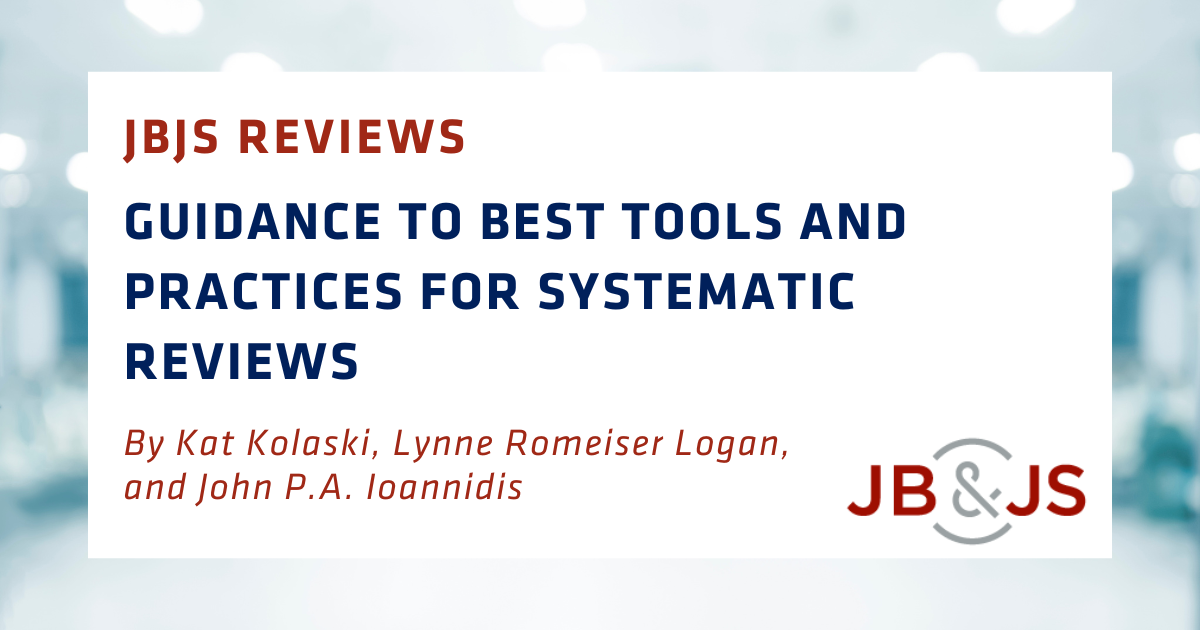A new article in JBJS Reviews offers guidance on best tools and practices for systematic reviews. The article was simultaneously published in Acta Anaesthesiologica Scandinavica, BMC Infectious Diseases, BMC Systematic Reviews, the British Journal of Pharmacology, JBI Evidence Synthesis, and the Journal of Pediatric Rehabilitation Medicine. This co-publication was the first such endeavor by JBJS Reviews and reflects a shared commitment to furthering knowledge in this important area of study design with the potential to impact patient care.
Guidance to Best Tools and Practices for Systematic Reviews
As the article notes, evidence syntheses are widely considered the foundation of evidence-based medicine. They influence medical research and clinical practice. However, many systematic reviews have methodological flaws or are prone to bias and errors, in part because some important aspects of these analyses may be overlooked or not well recognized or understood.
Given the wide range of methods and tools that are recommended for evidence syntheses, the authors aimed to distill the vast information into a helpful format for authors, peer reviewers, and editors.
“Many of us in the orthopaedic community have expertise in a given subspecialty and may serve as content experts in that area for studies going through the publication process. However, we may not be ‘experts’ on the methodology and tools involved in producing a high-quality systematic review,” says Dr. Thomas Einhorn, JBJS Reviews Editor. “This article offers guidance to expand our understanding.”
The authors describe methods and research practices as well as offer practical strategies to improve systematic reviews. The article is organized into 6 main parts:
- The state of evidence synthesis
- Types of syntheses and research evidence
- Conduct and reporting
- Meeting conduct standards
- Rating the overall certainty of evidence
- A Concise Guide to best practices, which summarizes the methods and tools recommended for the development and evaluation of evidence syntheses
The authors write that “we encourage dissemination and uptake of the currently accepted best tools and practices for their development and evaluation; at the same time, we stress that uptake of appraisal tools, checklists, and software programs cannot substitute for proper education in the methodology of evidence syntheses and meta-analysis.” They further conclude, “Our intention is to improve the trustworthiness of evidence syntheses across disciplines, topics, and types of evidence syntheses. All of us must continue to study, teach, and act cooperatively for that to happen.”
Access the full article at JBJS.org: Guidance to Best Tools and Practices for Systematic Reviews
Explore other recent articles from JBJS Reviews:



